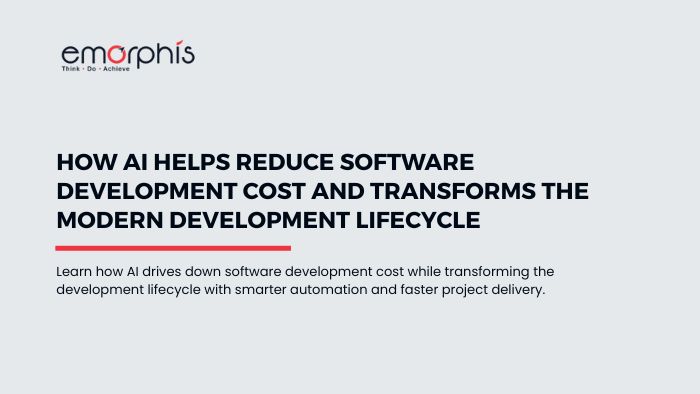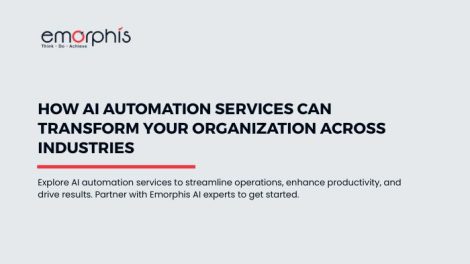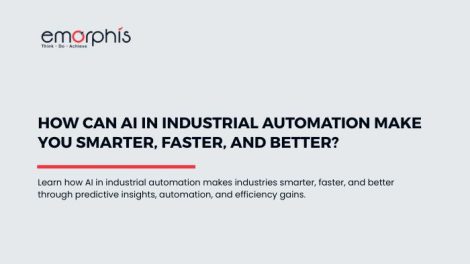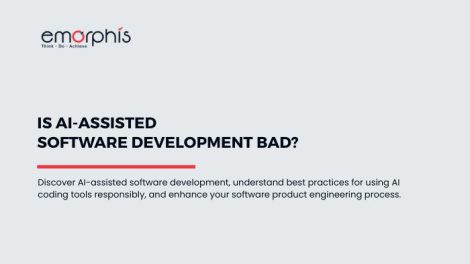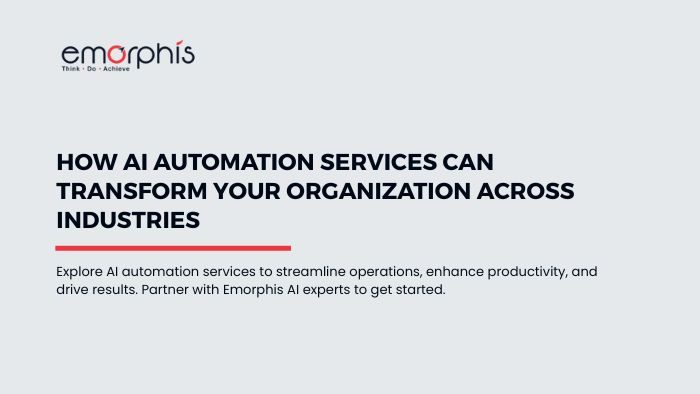Introduction
Understanding software development cost has become essential for businesses that want to innovate faster without stretching their budget. Whether a company builds in-house, works with a development partner, or evaluates offshore software development cost, the need for clarity around financial planning has never been more important.
Today, the cost of development is shaped by many factors such as team structure, engineering effort, architectural planning, quality assurance, cloud infrastructure, and ongoing maintenance. Each of these components contributes to the cost of software development in different ways depending on the project size, complexity, and delivery model.
As organizations look for new ways to optimize these costs without compromising product quality, AI is emerging as one of the most effective approaches. Modern AI tools assist developers, automate repetitive tasks, improve accuracy, enhance testing, and help teams move faster with fewer errors. This shift is not only transforming the development workflow but also helping companies achieve predictable budgets and better use of their engineering resources.

This article explores what makes up software development cost today and explains how AI helps reduce these components while improving quality and delivery speed.
What Makes Up the Cost of Software Development Today
Understanding software development cost begins with knowing where the money actually goes. Every software project is shaped by a combination of technical, architectural, and operational factors, and each one contributes differently to the overall cost of development. While the final budget varies based on complexity and delivery timelines, the following components consistently influence the cost of software development for any business.
A. Scope and Feature Complexity
The size of the application, the number of features, and the sophistication of the user workflow are among the biggest cost drivers. Complex systems that require advanced workflows, integrations, AI features, or custom business logic naturally involve more engineering effort, which increases the overall cost of development.
B. UI and UX Design Requirements
Design plays a direct role in software development cost. Creating intuitive interfaces, responsive layouts, custom design systems, prototypes, and user flows requires specialized design expertise. The more visually rich and user-driven the application, the higher the design and development investment.
C. Engineering Team Size and Skill Level
The type of talent involved also influences the cost of software development. Senior developers, cloud architects, AI engineers, and DevOps specialists significantly improve product quality but increase project cost compared to junior or mid-level developers. Companies opting for offshore software development cost models often seek a balance between price and expertise.
D. Technology Stack and Integrations
Different programming languages, frameworks, cloud services, and third-party APIs come with varying implementation efforts. Complex integrations with payment systems, CRMs, ERPs, healthcare systems, or legacy technologies add to the cost due to testing, security validation, and compatibility checks.
E. Infrastructure and Cloud Hosting
Infrastructure costs are a continuous part of the project life cycle. Cloud usage, storage requirements, load balancing, CI or CD pipelines, and other DevOps elements contribute to the ongoing cost of development and long-term maintenance.
F. Quality Assurance and Testing
Manual testing, automated testing, security testing, and performance testing all play a major role in estimating software development cost. More features and more integrations require more tests, more test data, and more validation cycles.
G. Project Management and Communication
Coordinating teams, aligning requirements, managing sprints, ensuring documentation, and maintaining communication across stakeholders are essential but often underestimated contributors to the cost of software development.
H. Ongoing Maintenance and Support
Even after launch, applications require continuous updates, security patches, monitoring, bug fixes, performance improvements, and new feature development. These long-term needs form a significant part of the total cost of development across the product lifecycle.
Now, before exploring how AI reduces the cost of software development, it is important to examine the industry data that shows how significantly it is already reshaping engineering productivity.

AI-Powered Cost Efficiency Backed by Real Numbers
AI is no longer a theoretical advantage in software development; it is a measurable accelerator that directly reduces cost and engineering effort. Recent industry data shows that up to 62 percent of software development work can now be automated by AI, enabling organizations to cut development expenses by nearly 40 percent while improving delivery speed. AI automation is dramatically shrinking repetitive effort, with reports showing a 30 to 40 percent reduction in routine coding tasks, and a 50 percent drop in manual testing time when AI-driven test automation is used.
Large enterprises are seeing this translate into real savings. BlueOptima’s benchmark found that GenAI adoption delivered a 4 percent productivity gain that saved more than 2 million USD annually for a 250-member engineering team. Even daily engineering workflows are becoming cheaper and faster. Research shows AI-assisted development reduces pull request review time by 31.8 percent, improving flow efficiency and reducing idle developer hours.
Companies like JPMorgan have validated this impact internally as well, reporting that AI coding assistants improved developer output by 20 percent, allowing engineers to focus more on complex, high-value tasks. Industry-wide surveys reinforce this momentum, with 72 percent of organizations confirming they have already experienced cost savings after integrating AI into the development lifecycle.
Whether it is code generation, debugging, testing, or prototyping, AI is consistently turning effort that once took hours into tasks that now take minutes. For companies looking to build more while spending less, these numbers show that AI is not optional anymore; it is the new baseline for cost-effective software development.
How AI Helps Reduce Software Development Cost
AI is fundamentally reshaping the way engineering teams plan, build, test, and maintain software. Instead of adding extra cost, AI reduces the overall cost of development by cutting down manual work, improving accuracy, speeding up delivery, and automating repetitive steps that traditionally consumed weeks of engineering time. This shift allows companies to manage software development cost more efficiently and achieve higher output with leaner teams.
1. Faster Coding and Reduced Development Time
AI coding assistants can generate boilerplate code, suggest improvements, help developers write functions faster, and reduce time spent on syntax, research, or debugging. With up to 30 to 40 percent of coding effort being automatable, teams can complete features in a fraction of the time, which directly lowers the cost of software development.
2. Automated Testing and Quality Assurance
AI-driven test automation tools identify bugs earlier, create test cases automatically, and run regression tests faster than manual teams can. This reduces the workload on QA engineers, cuts down the testing cycle time, and ensures fewer post-release issues. Because testing often makes up 25 to 40 percent of offshore software development cost, automation brings significant savings.
3. Improved Project Planning and Estimation Accuracy
AI-powered project management tools help teams estimate timelines more accurately by analyzing past performance, complexity patterns, and risk factors. Better estimation leads to fewer delays, fewer reworks, and a more predictable cost of development. This is especially useful for large or complex projects.
4. Reduced Rework and Fewer Bugs
AI-assisted code reviews detect vulnerabilities, logic errors, performance issues, and security risks faster and earlier in the cycle. This reduces rework, prevents costly refactoring, and improves overall stability. When rework drops, the cost of software development decreases significantly.
5. Streamlined Documentation and Knowledge Sharing
AI automatically generates technical documentation, API references, changelogs, and architecture notes based on the codebase. This saves hours of manual writing and also reduces onboarding time for new team members, which helps optimize engineering budgets.
6. Enhanced Productivity of Smaller Teams
Teams no longer need large engineering groups to deliver enterprise-scale applications. With AI, smaller teams can achieve the same workload as bigger teams, which lowers hiring costs and reduces the total software development cost across the project lifecycle.
7. Cost Optimization in Cloud and Infrastructure
AI tools can analyze cloud usage patterns, recommend cheaper configurations, automate scaling, and reduce unnecessary resource consumption. Since cloud spending is often one of the biggest cost drivers in modern development, these optimizations have a direct financial impact.
8. Better Decision Making Across the Development Lifecycle
AI provides insights into code quality, architecture decisions, performance bottlenecks, team velocity, and delivery risks. These insights help companies make better decisions faster, avoid expensive mistakes, and optimize resource allocation.
As AI becomes more deeply integrated into development workflows, its influence goes far beyond automation or productivity gains. It is actively reshaping how teams plan budgets, allocate resources, and manage the overall software development cost. This shift is creating a measurable impact on both current development practices and the future cost model of software engineering.

The Real Impact of AI on the Future of Software Development Cost
AI is redefining what businesses can expect from their development investments. Instead of treating software development cost as a fixed or rising expense, companies can now use AI to make their budget more predictable, more efficient, and more aligned with actual outcomes. The real impact goes beyond short-term savings and extends into long-term structural changes in how digital products are built and maintained.
a. AI Turns Development into a High-Efficiency Model
Traditional development relies heavily on manual effort, which creates variations in output, speed, and quality. AI reduces this variability and introduces consistency. This helps organizations lower the cost of development while ensuring predictable delivery.
b. Projects Move from Effort-Based to Outcome-Based
Previously, cost was directly tied to the number of hours developers worked. AI breaks this pattern by enabling faster output with fewer hours. Teams can now deliver more outcomes with the same or smaller budget, which changes how companies forecast software development cost.
c. Long-term Term Maintenance Becomes Cheaper
AI continuously monitors code quality, detects performance issues, and predicts future bugs or failures. As a result, maintenance becomes less reactive and far more efficient. This significantly reduces the cost of software development after launch, which is often the most expensive stage.
d. Faster Release Cycles Improve Business ROI
Organizations can release features, updates, and improvements much faster, which accelerates revenue generation and customer adoption. Faster delivery cycles directly improve the financial return on each stage of development.
e. Talent Dependency Reduces Over Time
AI enables smaller teams to produce enterprise-level software. This reduces hiring pressure, consulting fees, and offshore software development cost, making long-term projects more financially sustainable.
Traditional Development Cost vs AI-Driven Development Cost
| Cost Factor | Traditional Development Cost | AI-Driven Development Cost |
|---|---|---|
| Time to Develop | Longer development cycles due to manual coding, testing, and documentation | Faster delivery with automated coding, AI-assisted testing, and instant documentation |
| Engineering Team Size | Requires larger teams to manage the workload | Smaller, highly efficient teams supported by AI tools |
| Rework and Bug Fixing | Higher due to manual reviews, human errors, and delayed issue detection | Lower due to AI code reviews, early bug detection, and cleaner code generation |
| Testing and QA Cost | Manual testing increases time and cost | AI-generated test cases and automated regression cycles reduce QA cost |
| Estimation and Planning | Subjective estimates often lead to timeline and budget overruns | Data-driven predictions improve accuracy and reduce the unnecessary cost of development |
| Maintenance Effort | Higher long-term maintenance costs and frequent manual fixes | Predictive maintenance reduces issues and lowers the cost of software development over time |
| Cloud and Infrastructure Spending | Manual scaling and misconfigurations often lead to overspending | AI optimizes cloud usage and reduces operational waste |
| Overall Financial Efficiency | Higher software development cost with growing complexity | Lower cost through automation, faster delivery, and reduced engineering effort |
| Offshore Team Dependency | Heavy reliance on offshore software development cost models | Lower reliance due to AI-assisted productivity and smaller teams |
Outcome of comparison
When comparing traditional development with AI-driven development, the difference in software development cost becomes clear. Traditional models depend heavily on manual coding, large engineering teams, and long testing cycles, all of which increase the cost of development as projects become more complex.
Find details on AI-assisted software development.
AI-driven development fundamentally changes this structure by accelerating coding, automating testing, reducing rework, and improving estimation accuracy. Smaller teams can deliver more in less time, while AI tools minimize the need for extensive offshore software development cost models.
Additionally, AI optimizes cloud usage and predicts maintenance issues before they become expensive problems. This combination of speed, automation, and smarter decision-making significantly reduces the overall cost of software development and creates a more scalable, cost-efficient development model.
As businesses evaluate new ways to control software development cost, one approach consistently delivers long-term savings and higher efficiency. Custom AI software development goes beyond generic tools and introduces deep automation that aligns directly with a company’s workflows, architecture, and product vision. This is where the next level of cost reduction begins.

Why Custom Software Development With AI Assistance Accelerates Cost Efficiency
Custom software development with AI assistance brings a level of efficiency, precision, and automation that traditional development models cannot match. Instead of building AI from scratch, organizations combine their existing development processes with AI-powered tools that enhance coding, testing, design, documentation, and maintenance. This creates a smarter and more cost-effective development environment that directly reduces software development cost across the entire lifecycle.
1. AI Enhances Developer Productivity Without Replacing Teams
AI assistance acts like a real-time partner for developers. It suggests code, detects errors early, provides refactoring ideas, and speeds up everyday tasks. This allows teams to deliver more features in less time, which reduces both the cost of development and dependency on large offshore software development cost models.
2. Tailored Automation for Your Product and Codebase
Unlike generic AI tools, AI assistance becomes more effective when applied to your specific architecture and technical environment. When AI understands your coding patterns, domain logic, and product workflows, it automates exactly what slows your teams down. This creates targeted savings and reduces the overall cost of software development.
3. Lower Testing and QA Effort Through AI-Assisted Automation
Testing is one of the most expensive stages in the development cycle, but AI helps automate test case generation, regression testing, and defect detection. This shortens QA cycles and reduces manual workload, which directly lowers software development cost while improving product stability.
4. Faster Development Cycles With Fewer Delays
AI tools help predict risks, estimate development timelines, and identify bottlenecks before they impact the project. By improving planning accuracy, organizations avoid last-minute rework, missed deadlines, and budget overruns. This leads to a more predictable cost of development for both new builds and long-term enhancements.
5. More Efficient Maintenance and Long-Term Support
Most companies spend more on maintenance than on initial development. AI assistance reduces long-term maintenance cost by analyzing performance issues, identifying bugs early, and automating fixes for common problems. This helps teams maintain software quality without increasing operational spending.
6. Reduced Dependency on Large Teams
Because AI handles repetitive tasks and accelerates coding, smaller teams can now deliver enterprise-grade projects. This lowers hiring costs, reduces reliance on offshore software development cost models, and makes custom software development more affordable and scalable.
7. Better Decision Making Through AI-Powered Insights
AI provides data-driven insights into code quality, feature complexity, cloud usage, team velocity, and technical debt. These insights help engineering leaders make smarter decisions that reduce unnecessary spending and optimize software development cost at every stage.
Custom software development with AI assistance ultimately transforms the development process into a faster, smarter, and more financially efficient model. It allows companies to innovate while maintaining full control over their budgets and timelines.

Conclusion
The landscape of modern software development is changing rapidly, and AI is now at the center of this transformation. As organizations look for smarter ways to manage software development cost, AI-assisted, AI-driven, and AI-powered development has become the most effective path forward. It enhances productivity, reduces manual effort, improves planning accuracy, lowers maintenance costs, and helps teams deliver high-quality software faster and more efficiently.
Custom software development with AI assistance not only streamlines the development lifecycle but also creates long-term financial gains by reducing dependency on large teams, minimizing rework, and optimizing cloud and infrastructure spending. Businesses that adopt these capabilities early will experience significant cost advantages and gain a stronger competitive edge in their digital initiatives.
If you are exploring ways to lower your development cost, accelerate delivery cycles, or modernize your development workflow, now is the right time to take the next step. Connect with our AI software development services experts and software product development experts to get the right quotation for AI-assisted, AI-driven, and AI-powered software development. Our team can guide you through the best approach, tailored to your product and budget, so you can build smarter, faster, and more cost-efficiently.



